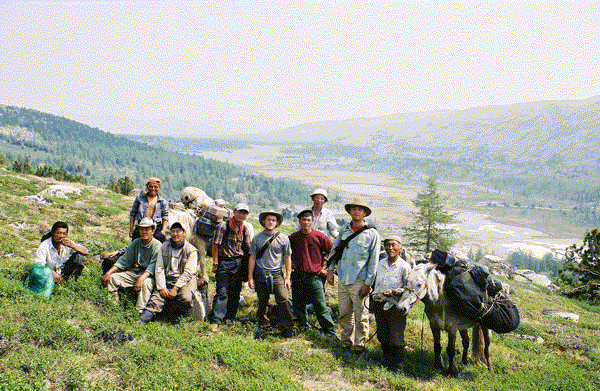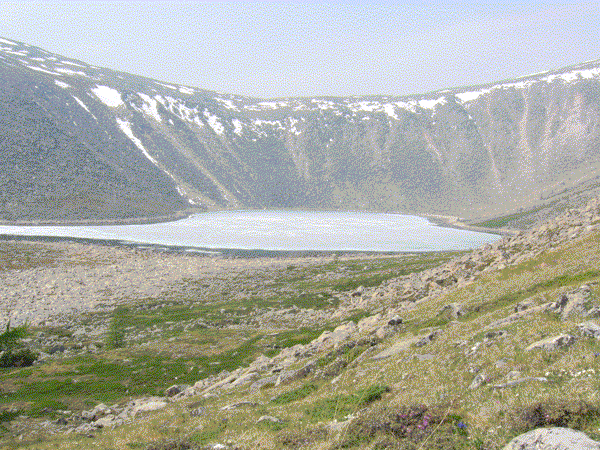 |
||||||||||||||
|
|
||||||||||||||
|
Mongolia
|
|
Late Holocene Records of Lacustrine Productivity from Small Alpine Lakes in the Baroon Taiga Mountains, Northern Mongolia - Collaborators Kevin Robinson, Michael Rosenmeier, Joseph Ortiz, Nergui Soninkhishig, Charles Umbanhower and William Fitzhugh among others Climatic instability is highly relevant to modern Mongolia where a large percentage of the population rely upon traditional agrarian practices. Recent warming trends and subsequent reorganization of regional weather patterns have altered soil transpiration rates and precipitation patterns, resulting in increased pressure on climate sensitive grazing areas. In keeping with current estimates of climatic warming, the fragile vegetation dynamics of the Mongolian steppe are likely to be altered, with pontential impacts on the traditional lifestyles of the nomadic pastoralists and the overall Mongolian economy. Despite evidence for the region's high-sensitivity to projected climatic change, an understanding of the regional ecosystems' evolution in response to past climate variations and the mechanisms that ultimately drive regional climate dynamics is limited. The development of proxy-based paleoenvironmental records is central to any effort to gain a better understanding of regional climatic dynamics, as regional instrumental records of climate span only the past 100 years.
High altitude sub-arctic lakes are often valuable repositories of regional climatic information. The deposition of biological byproducts (i.e., pigments, biogenic silica (BSi), diatom frustules) in the sediments of alpine cold-climate lakes is largely dependent on the internal productivity processes within each lake system, as their catchments generally have limited sources of allochthonous organic material. Provided that selective degradational affects are minimal throughout the sediment and water profiles, such biomarkers can be employed to determine past internal productivity histories. Furthermore, high altitude sub-arctic lakes have been shown to respond to climatic variation in predictable ways. In this study we applied the VNIR methods as well as standard paleolimnological techniques to three sediment records retrieved from two small, alpine lakes from Northern Mongolia. The resulting records are compared regional tree-ring based temperature reconstructions to identify potential climatic influence on the lakes' productivity rates to extend proxy-based regional climate variation records throughout the late Holocene.
|
|



